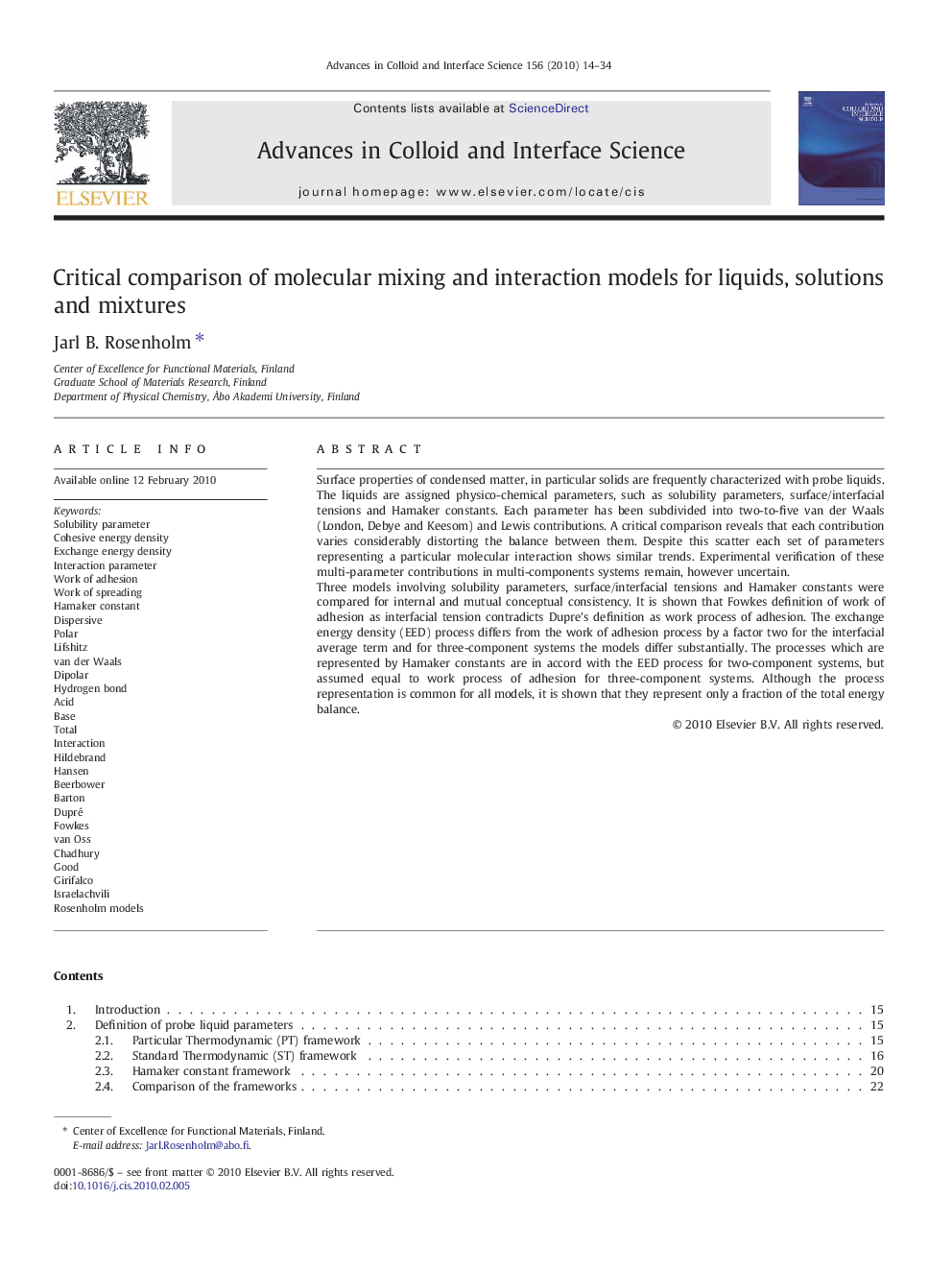| Article ID | Journal | Published Year | Pages | File Type |
|---|---|---|---|---|
| 591057 | Advances in Colloid and Interface Science | 2010 | 21 Pages |
Surface properties of condensed matter, in particular solids are frequently characterized with probe liquids. The liquids are assigned physico-chemical parameters, such as solubility parameters, surface/interfacial tensions and Hamaker constants. Each parameter has been subdivided into two-to-five van der Waals (London, Debye and Keesom) and Lewis contributions. A critical comparison reveals that each contribution varies considerably distorting the balance between them. Despite this scatter each set of parameters representing a particular molecular interaction shows similar trends. Experimental verification of these multi-parameter contributions in multi-components systems remain, however uncertain.Three models involving solubility parameters, surface/interfacial tensions and Hamaker constants were compared for internal and mutual conceptual consistency. It is shown that Fowkes definition of work of adhesion as interfacial tension contradicts Dupre's definition as work process of adhesion. The exchange energy density (EED) process differs from the work of adhesion process by a factor two for the interfacial average term and for three-component systems the models differ substantially. The processes which are represented by Hamaker constants are in accord with the EED process for two-component systems, but assumed equal to work process of adhesion for three-component systems. Although the process representation is common for all models, it is shown that they represent only a fraction of the total energy balance.
